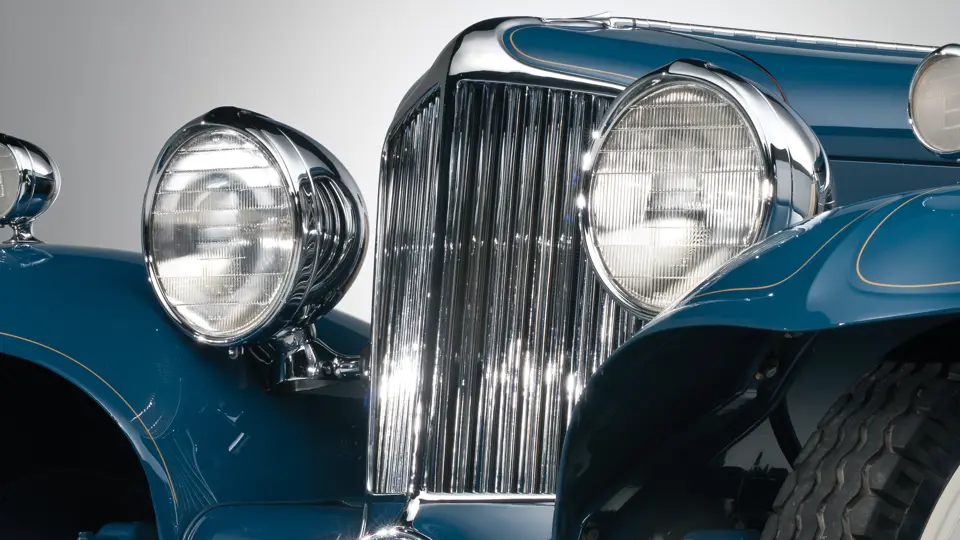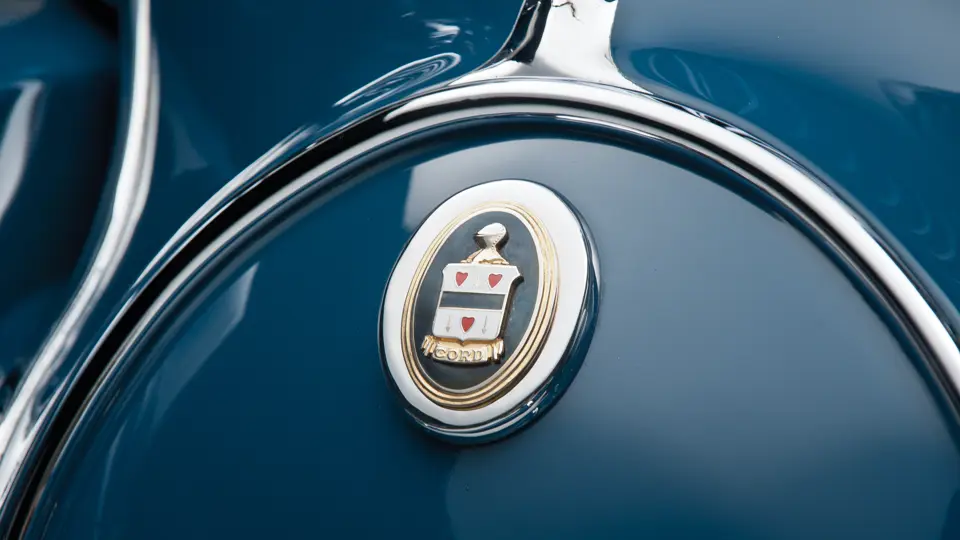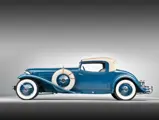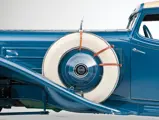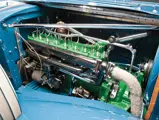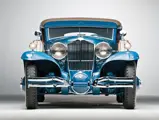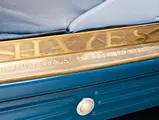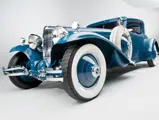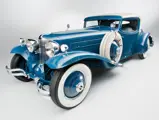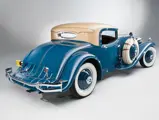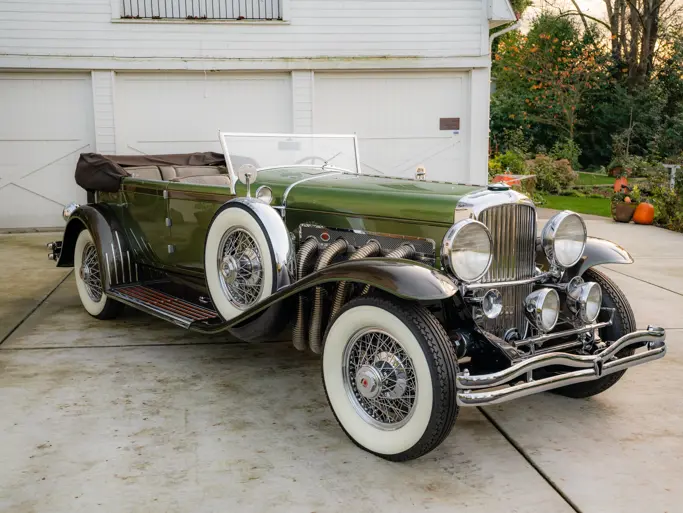125 bhp, 298.6 cu. in. L-head inline eight-cylinder engine, front-wheel drive, three-speed selective sliding-gear manual transmission, and four-wheel hydraulic drum brakes. Wheelbase: 137.5"
• Stunning one-off design statement by Count Alexis de Sakhnoffsky
• Winner, 1930 Paris, Monte Carlo and Beaulieu Concours d’Elegance
• Known provenance from new includes 50 years with Brooks Stevens
• Auburn-Cord-Duesenberg Club Level One original certification (1993)
• Pebble Beach Class and Special Award winner, Best in Class, Meadow Brook
The fast rise and eventual collapse of E.L. Cord’s massive industrial empire, with the Auburn, Cord and Duesenberg marques at its core, remains one of corporate America’s most fascinating and tragic stories. From his dramatic turnaround of Auburn in the mid-1920s, a textbook case of effective marketing, Cord’s companies manufactured and sold some of the most innovative, stylish and value-rich automobiles ever conceived. Today, all continue to captivate collectors and enthusiasts alike.
By 1927, Cord perceived a niche for a new medium-priced car with innovative engineering and distinctive styling, attributes that were almost mutually exclusive in many car lines. The startling result was the Cord Front Drive, designated L-29. Inspired by Cornelius Van Ranst and Tommy Milton’s front-drive, Miller-powered 1927 Indianapolis 500 car, the L-29 pushed the boundaries of automobile technology, and it remains a milestone. A potential disadvantage, the long drivetrain package necessitated by the L-29’s inline eight-cylinder and front-drive system, became one of the car’s greatest assets when designer Al Leamy sketched one of the longest hoods ever seen.
Introduced in the summer of 1929, the breathtaking new L-29 was offered in a wide variety of factory bodies. Although the devastating stock-market crash of 1929 was just around the corner, L-29 production totaled 5,010 cars versus Cord’s original sales projection of 5,000 units. American and European custom coachbuilders naturally gravitated to the design possibilities offered by the low-slung L-29 chassis, and 43 custom-bodied L-29s were created. Just 12 are known to remain in existence today, including the singular and stunning Hayes Coupe we are delighted to offer here.
Designed by Count Alexis de Sakhnoffsky for Grand Rapids, Michigan’s Hayes Body Company, this “one-off” design statement was conceived and built specifically for international show competition, and today it remains one of the crowning achievements of the Classic Era. The Count, the son of an advisor to Czar Nicholas II, was an automotive enthusiast from his youth. Following the Russian Revolution, he made his way to Paris where he quickly developed an outstanding reputation for his natural design prowess.
Following training in engineering and art school, the young Count applied his talents to some of the world’s finest chassis of the 1920s, including Minerva, Packard and Rolls-Royce. His designs for Vanden Plas in Belgium earned four successive Grands Prix d’Honneur in Monte Carlo from 1926 through 1929. In 1928, Hayes Body Company of Michigan recruited and sponsored the young de Sakhnoffsky’s emigration to America, and Packard’s Alvan Macauley attempted to lure the Count away. Nonetheless, de Sakhnoffsky remained loyal to Hayes, and he quickly displayed remarkable versatility by designing the 1930 Marmon Model 78 line and the contrastingly tiny American Austin, which continued little changed through 1940 as the American Bantam.
Since Hayes was primarily a mass producer of automobile bodies, de Sakhnoffsky proposed a “one-off” coupe based on Cord’s new L-29 to company management as a styling exercise to perhaps win contracts from Cord or more adventurous work from other manufacturers. While the long and low L-29 chassis provided the perfect canvas for the Count’s European design sensibilities, he decried the ‘squarish’ lines and upright windshield of the basic factory-built body design, retaining only the front and rear bumpers and sleek radiator shell and the basic front and rear fenders, which he subtly restyled.
A masterpiece, de Sakhnoffsky’s sinuous and sporting coupe elevated closed-car styling to heights previously enjoyed only by open designs. Unique touches included a dramatically swept hood featuring a pair of decorative creases from the radiator to the flanks of the cowling and horizontal cooling louvers. A valance atop the steeply-raked and low-cut windshield concealed a unique track for the horizontal wiper mechanism, a layout that was in fact the earlier brainchild of Cornelius Van Ranst. Running boards were eliminated by virtue of the lengthened front fenders sweeping beyond the sculpted leading edges of the doors. The hood’s accent creases were picked up by the doors, swept downward in line with the curvature of the windows and then back up to smoothly hug the bottom of the rear window before joining to stretch down the rear deck and terminating in a spear.
Other features of the Hayes Coupe included blue wool broadcloth upholstery, a spacious leather-trimmed rumble seat with a central armrest, a small elliptical rear window, dual side-mounted spare tires and smooth conical steel-disc covers for the wire-spoke wheels. The exterior color scheme personally specified by de Sakhnoffsky was a combination of a Mountain Mist Blue body, Cicero Blue accents, Dryad Blue wheel covers and gold pinstriping. The beautifully crafted grain leather faux convertible top was tan, with blue beaded leather accents.
Once de Sakhnoffsky finished his design for the coupe, Hayes’ craftsmen had just over two months to complete it in time for de Sakhnoffsky to travel with the car to show it at Europe’s premier concours. The challenge was met with stunning results. Estimates place the project’s cost at $20,000, a truly massive sum of money at the time, particularly as the world quickly careened into the throes of the Great Depression.
Next, the Hayes Coupe and de Sakhnoffsky embarked together for Europe on the Leviathan, the very ocean liner that had earlier brought the Count to America. Once in France, de Sakhnoffsky drove the coupe from Le Havre to Paris. The effort proved worthwhile, with the Hayes Coupe capturing the Medal of Honor in Paris, followed by the achievement of de Sakhnoffsky’s fifth Medal of Honor at Monte Carlo in as many years! Just one week later, the Hayes Coupe garnered top honors at the UK’s Beaulieu Concours d’Elegance, and in so doing, it became the first American entry to win at all three of the aforementioned venues, a truly remarkable feat.
Following its return stateside, the Hayes Coupe was shown extensively and then returned to Hayes in Grand Rapids, Michigan and used intermittently by a Hayes official until it was acquired in the mid-1930s by Mr. W.B. Johnson, a Hayes company director who had noticed the distinctive coupe on a visit to Hayes’ facilities. According to a letter from Mr. Johnson dated August 24, 1941, he “suggested he would like to have it, if it was put in first class condition.” Accordingly, Hayes removed and restored the body and trimmings, while the chassis was shipped to Cord’s facilities and completely overhauled. Mr. Johnson, who went on to become the President of the National Erie Corporation, reported in the aforementioned letter that he drove the Hayes Coupe for three years and then placed it into storage.
In 1941, rising industrial designer Brooks Stevens acquired the coupe, which, as he later related to a subsequent owner, was sold to him by Mr. Johnson for just one dollar, with Mr. Stevens responsible only for shipping from Erie, Pennsylvania to his location in Wisconsin. Later, Mr. Stevens placed the Hayes Coupe within his noted museum. Mr. Stevens retained the Hayes Coupe for the next five decades. Fittingly, after he hired the car’s original designer, Count Alexis de Sakhnoffsky in the 1950s, Mr. Stevens granted the use of the car at his pleasure as a courtesy. Under Mr. Stevens, the Hayes Coupe was completely restored by his museum curator Allen L. Bonk in preparation for its entry into the special Custom-Bodied Cord class at the 1987 Pebble Beach Concours d’Elegance, where it won Best in Class, the Co-Chairmen’s Award and People’s Choice.
As expected, the Hayes Coupe created a sensation again during its post-restoration life, appearing in numerous publications, including the August 1987 edition of Motor Trend, the April 1988 Collectible Automobile, The Classic Car (published by the CCCA), The Auburn Cord Duesenberg Club Newsletter and more. It was also immortalized in highly detailed 1:16-scale model form by the Danbury Mint. In mid-1991, the car was acquired by collector Patrick S. Ryan. Under Mr. Ryan’s stewardship, the Hayes Coupe received Level 1 Original Certification (CL-073) following detailed examination by the Auburn Cord Duesenberg Club. In July 2008, the Hayes Coupe was displayed at the Meadow Brook Concours d’Elegance, where it won Best in Class for the Auburn-Cord-Duesenberg class. The next month, the current owner/collector acquired it.
As offered, the Hayes Coupe remains visually impressive today, notwithstanding the 25 years that have passed since it was restored for show competition at Pebble Beach. The accompanying document files are complete with comprehensive history, including a period description of the car with historic images of Count Alexis de Sakhnoffsky with his creation and another image with “Ziegfield Girl” Marion Dodge posing with the car, as well as restoration images, articles, correspondence and more. With its known and confirmed provenance, including 50 years of careful single-ownership under Brooks Stevens, the Hayes Coupe remains one of the ultimate creations of the Classic Era. With styling that even the legendary Mr. Stevens declared virtually impossible to improve upon, this unqualified design masterpiece now stands ready to continue to captivate all onlookers with a new caretaker.
Please note, this vehicle is titled by its engine numbered FD2638A.
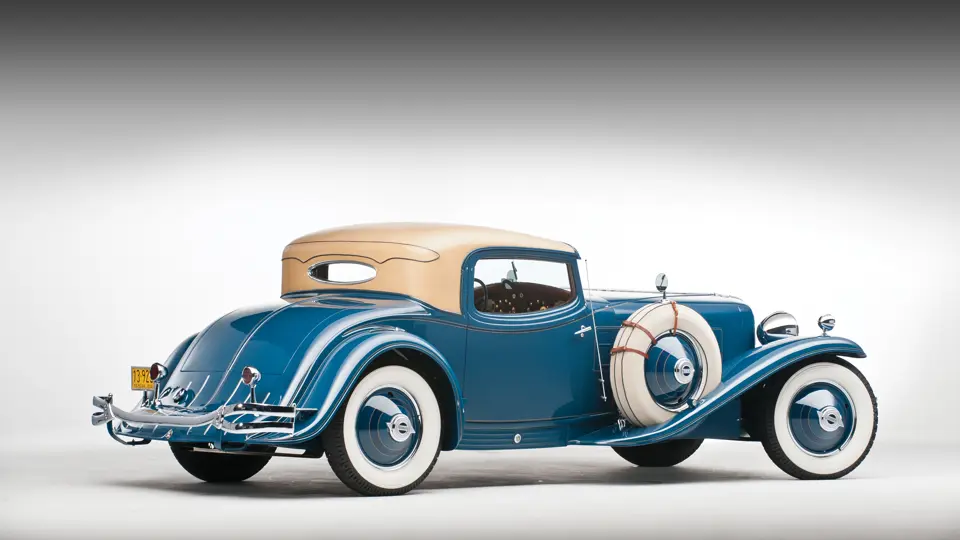
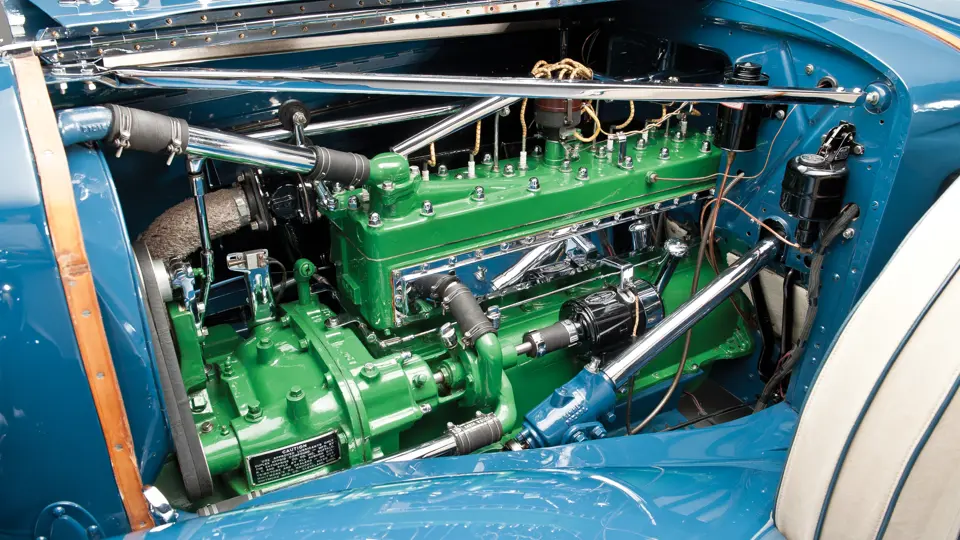
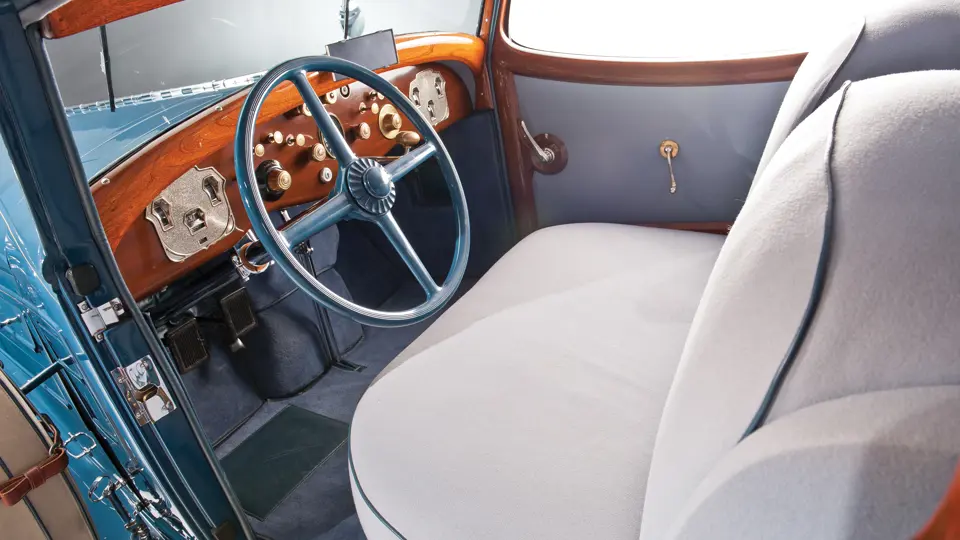

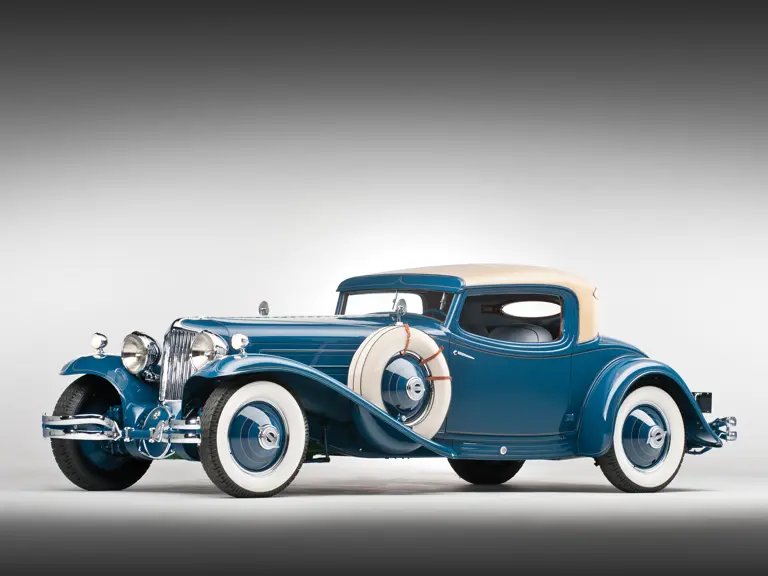
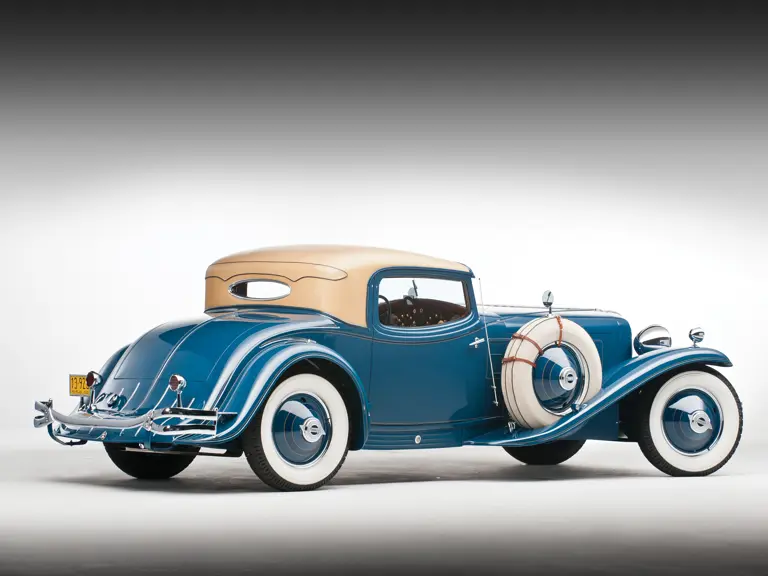



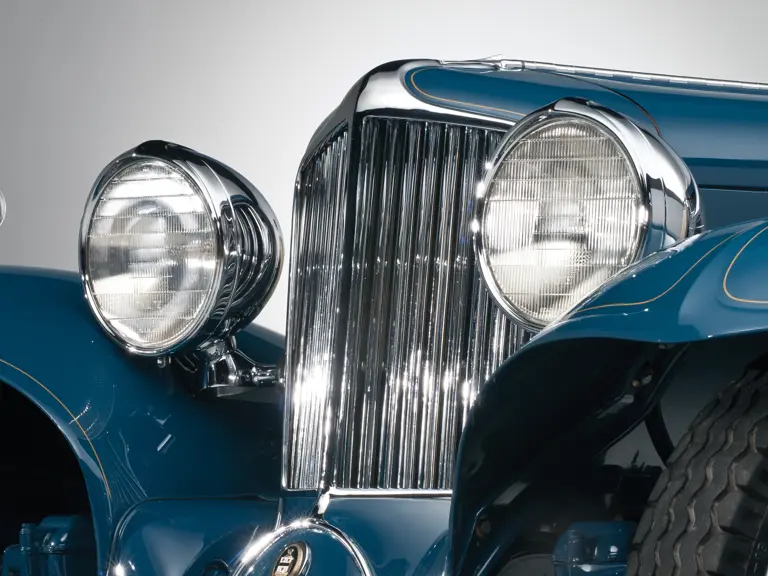
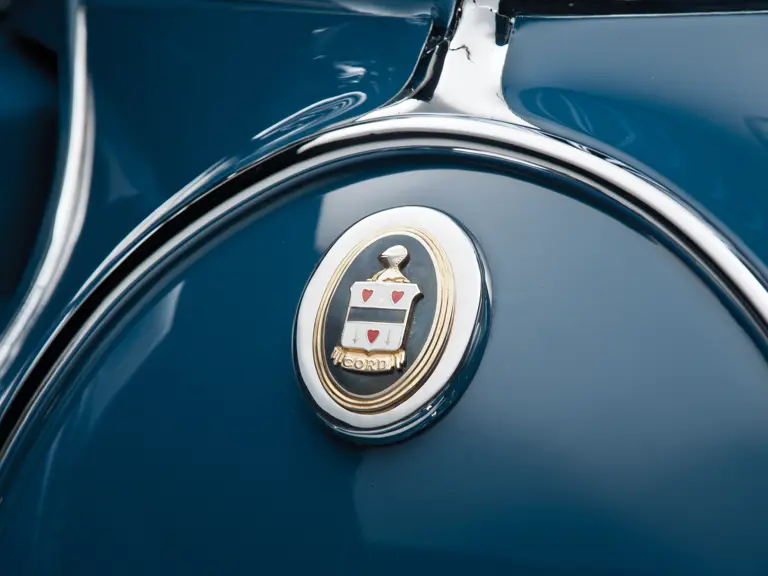


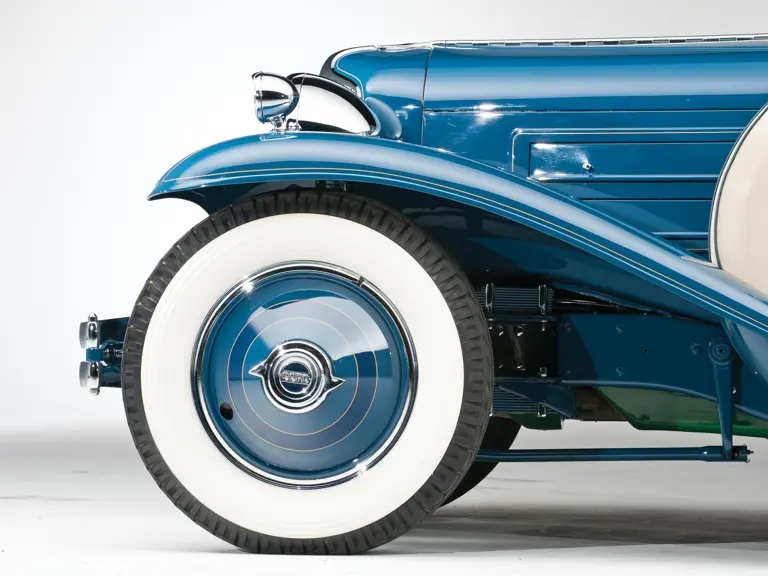

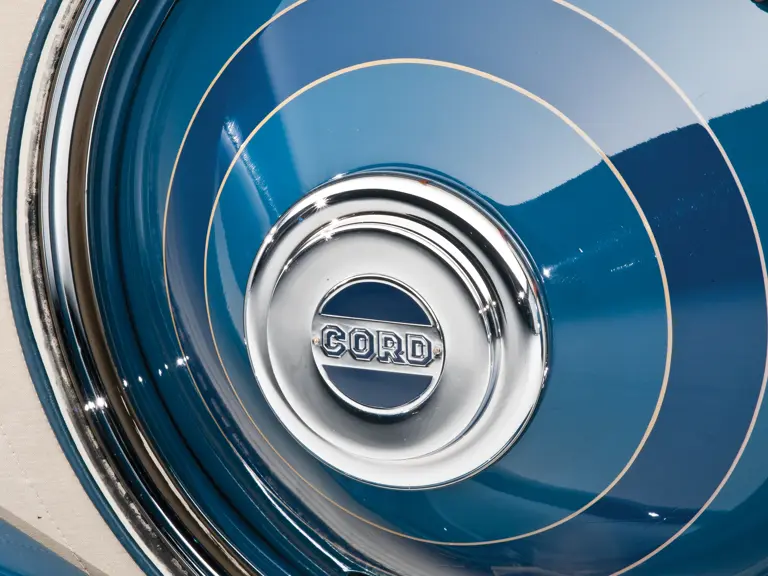


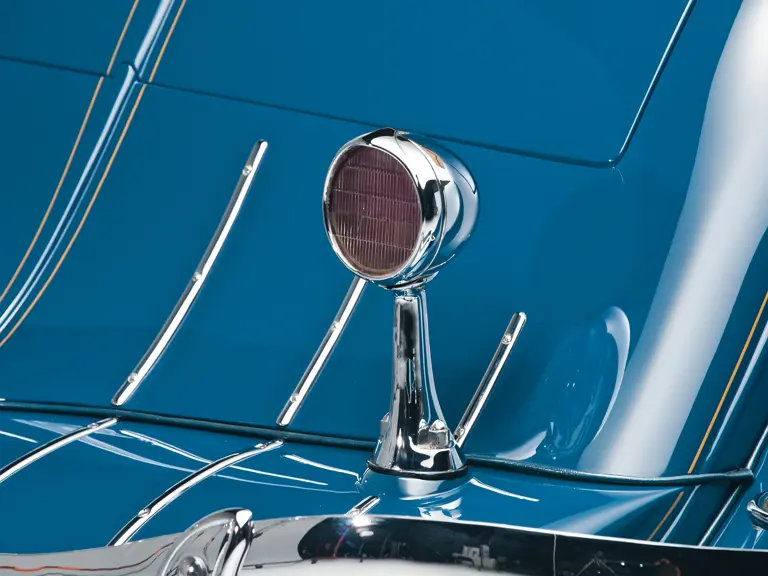
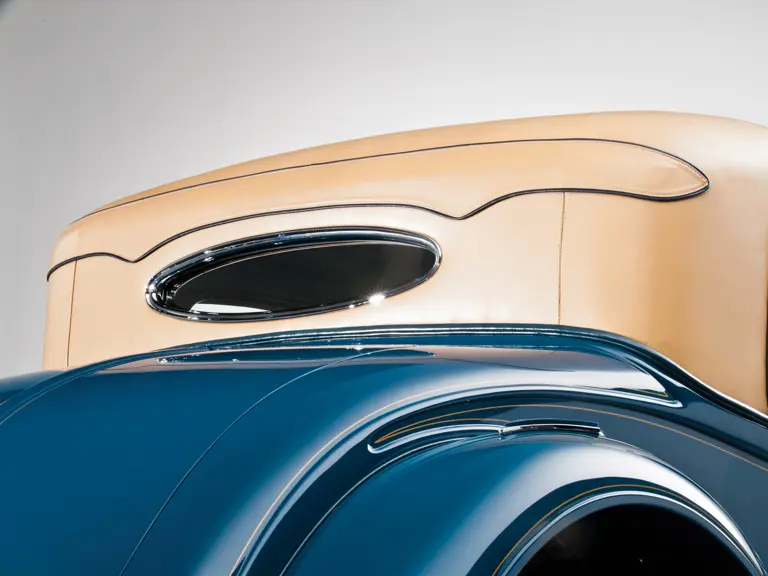

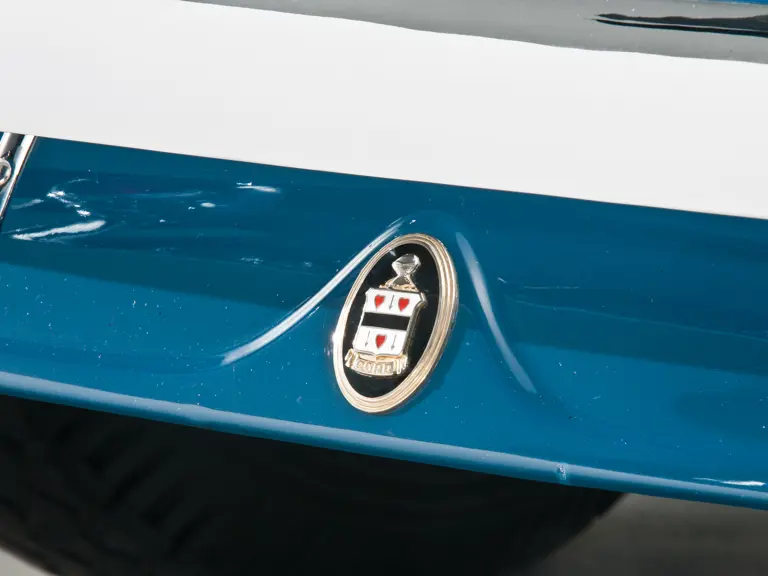

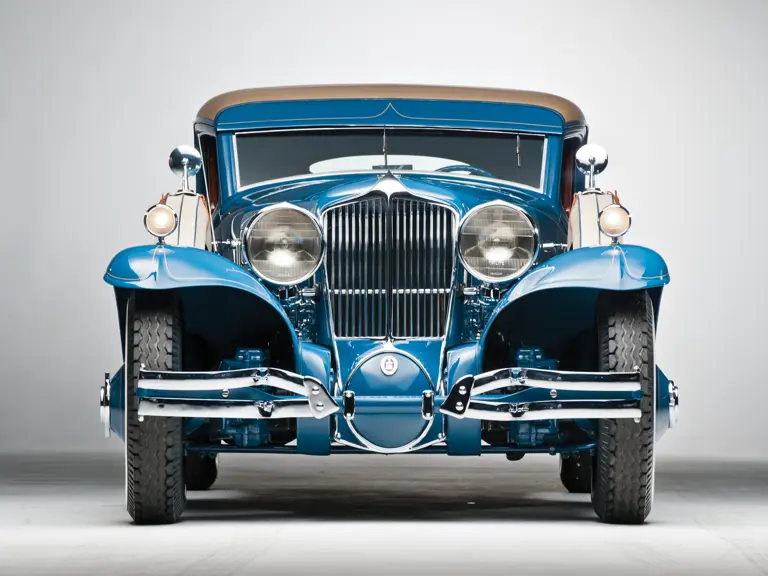

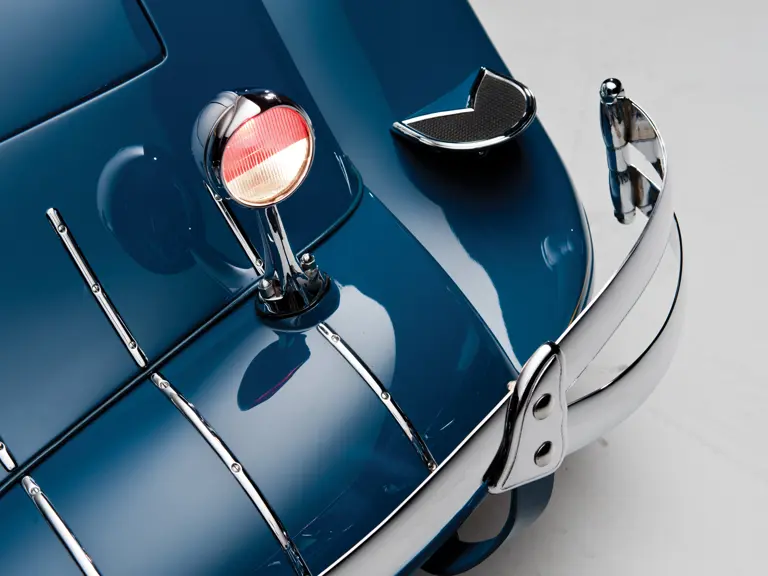
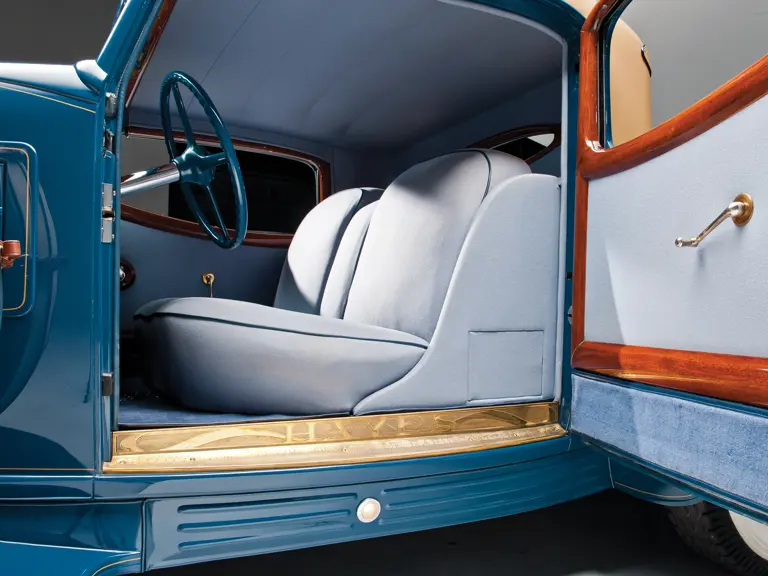
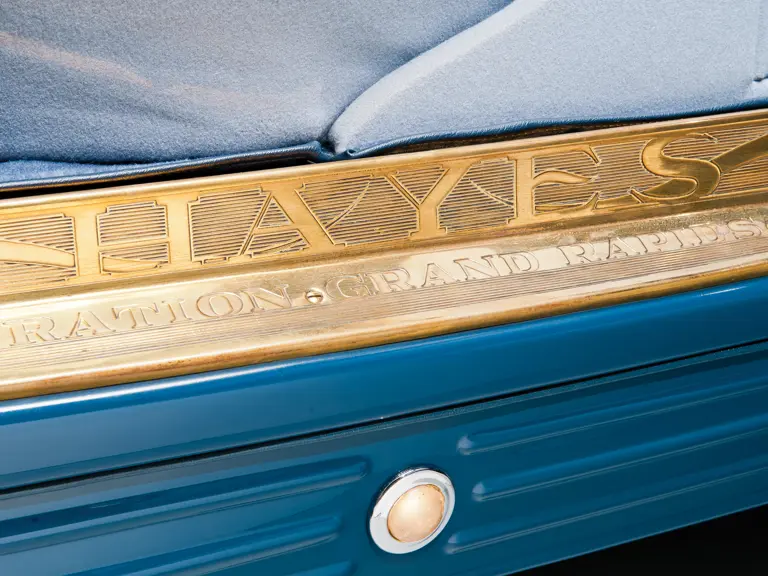
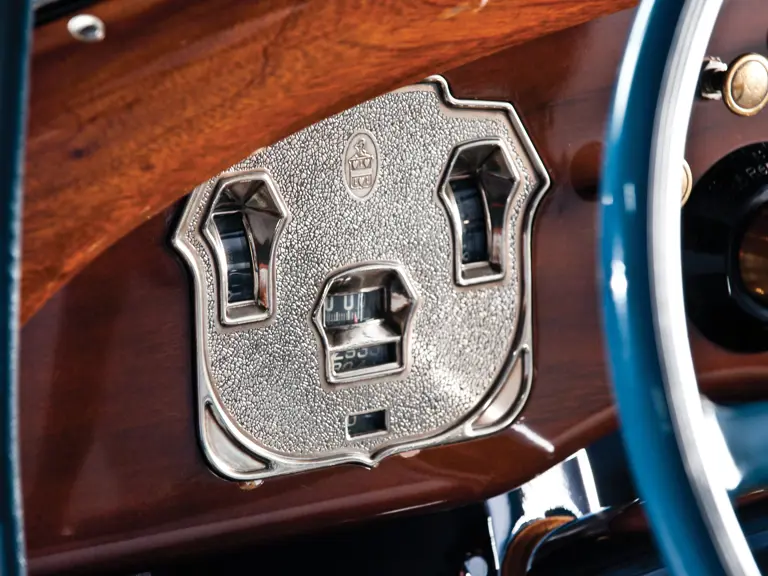
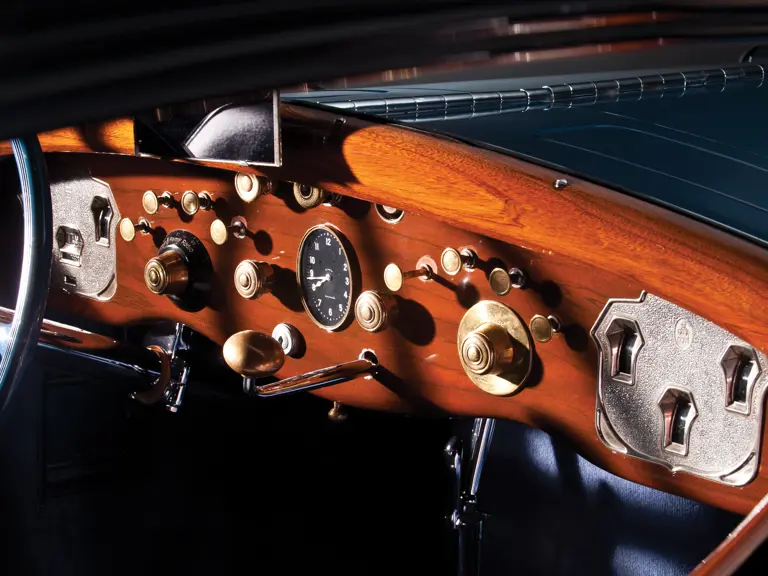
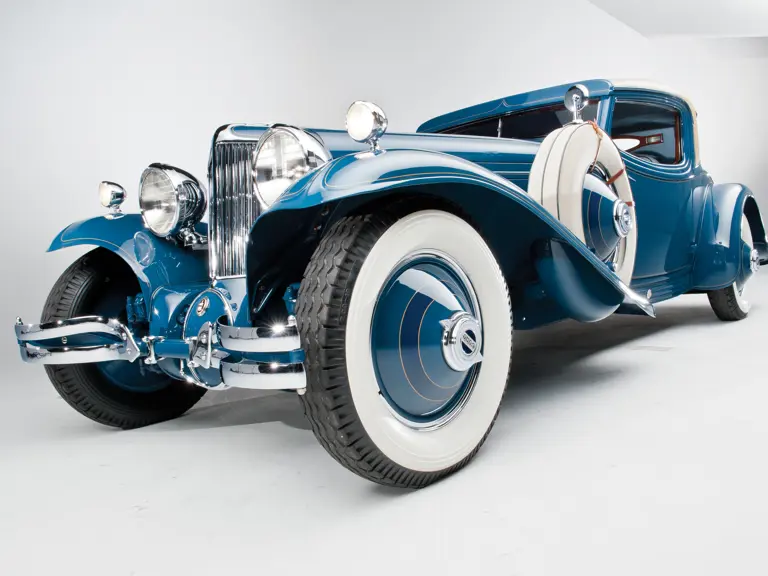



 | Amelia Island, Florida
| Amelia Island, Florida

